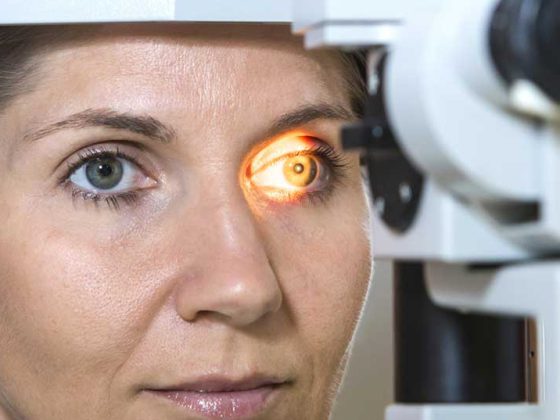Patients with advanced, progressive somatostatin receptor-positive neuroendocrine tumors (NET) of the midgut may benefit from so-called peptide-mediated radioreceptor therapy (PRRT), according to a publication in the New England Journal of Medicine. One targets the tumor with radiolabeled somatostatin-analog peptides. Prolonged both progression-free survival and response rate were compared with the high-dose somatostatin analog octreotide LAR (intramuscular at a dose of 60 mg every four weeks). Final data on overall survival are currently pending.
For PRRT, the phase 3 trial in question [1] used 177Lutetium dotatate, a Lu-177-labeled somatostatin analog peptide. Neuroendocrine tumor cells usually have a high density of somatostatin receptors. The somatostatin-analog peptide reaches the receptor in question on the tumor cell and remains there for several days. Meanwhile, 177Lutetium, a radioactive particle, ensures that the surrounding tumor cells are irradiated and killed. It is therefore an internal targeted irradiation.
These were randomized to 116 participants who received four intravenous infusions along with the best possible concomitant therapy, which included octreotide LAR intramuscularly at a dose of 30 mg. The remaining 113 patients underwent octreotide LAR therapy alone at the above dose.
Survival data give hope
The primary endpoint was defined as progression-free survival. Secondary endpoints included response rate and overall survival, for which only a preliminary interim analysis is currently available.
- At 20 months, calculated PFS rates were 65.2% vs. 10.8% in the control group. Consequently, the risk of progression or death was significantly reduced by 79% with PRRT (risk ratio 0.21; 95% CI 0.13-0.33; p<0.0001).
- The interim analysis for overall survival was in the same direction: 14 vs. 26 deaths occurred in the two groups (p=0.004).
- Response was also significantly improved in the 177Lutetium Dotatate group, from 3% to 18% compared with the control group.
Clinically significant myelosuppression occurred in less than 10% of patients in the study group: Compared to zero patients in the control group, neutropenia occurred in 1%, thrombocytopenia in 2%, and lymphopenia in 9% of those treated (each of grade 3-4). Toxic effects on the kidney were not found with simultaneous administration of a renal-protective agent – at least during this study period.
The progression of the disease is a challenge
Currently, treatment options are limited for individuals with advanced NET of the midgut who demonstrate disease progression with first-line treatment with a somatostatin analog. The results of the study are therefore promising and give hope for a new treatment alternative. Especially the objective response rates are impressive and were not expected in this collective. One can be curious about the final data of the planned final analysis.
Literature:
- Strosberg J, et al: Phase 3 Trial of 177Lu-Dotatate for Midgut Neuroendocrine Tumors. N Engl J Med 2017; 376: 125-135.
InFo ONCOLOGY & HEMATOLOGY 2017; 5(1): 3.











